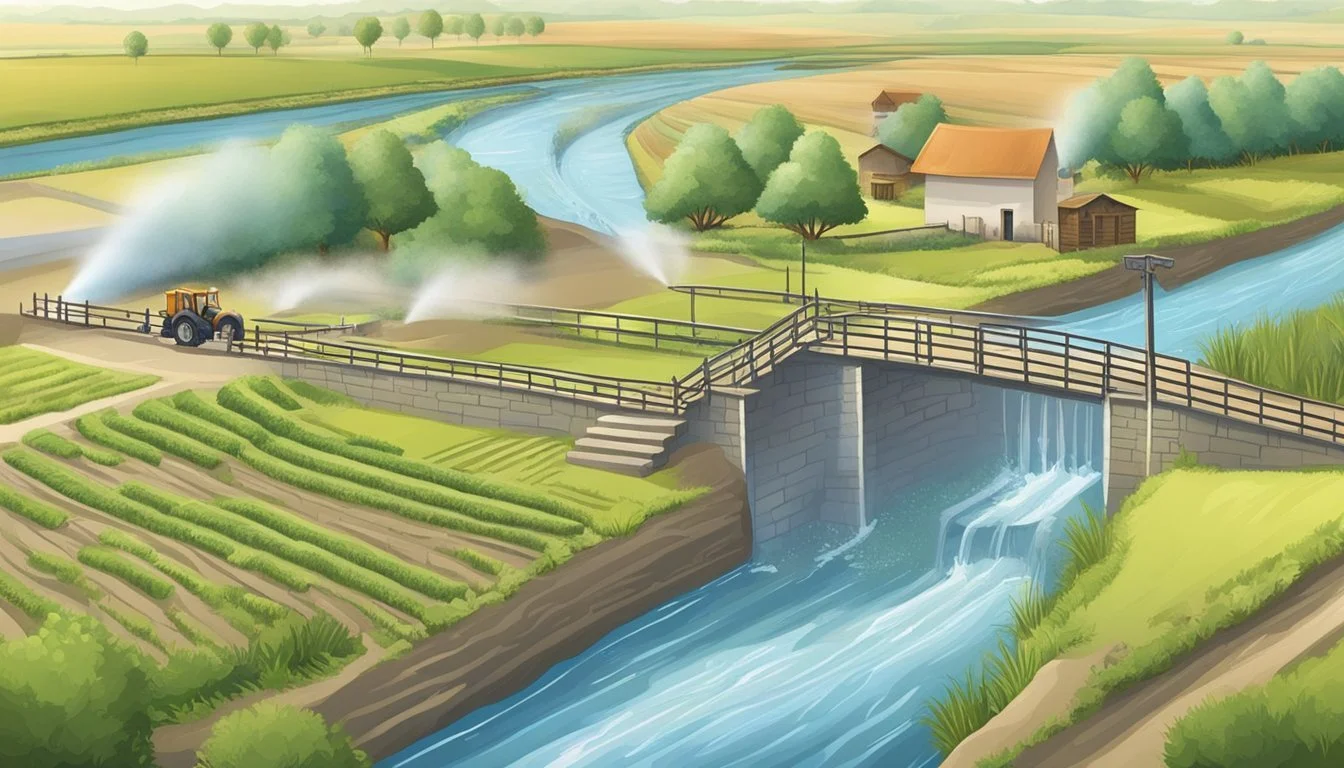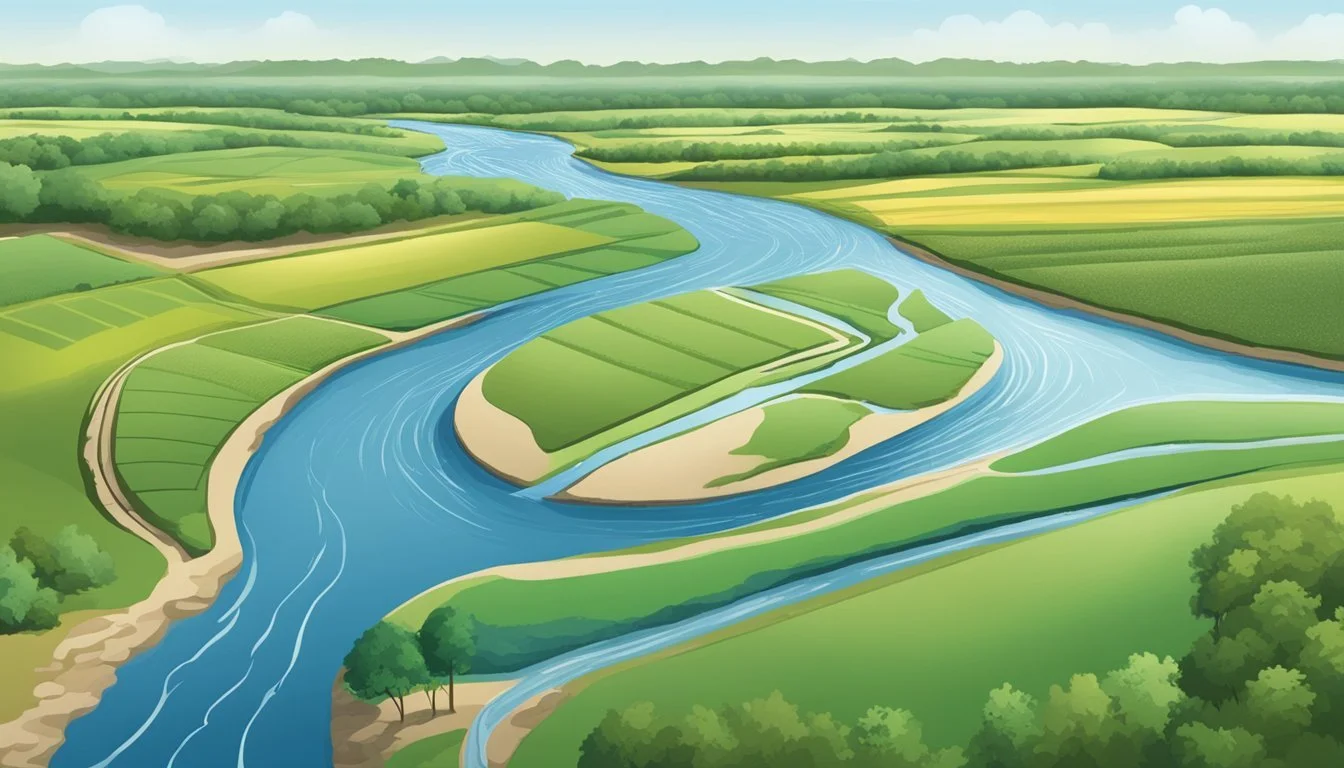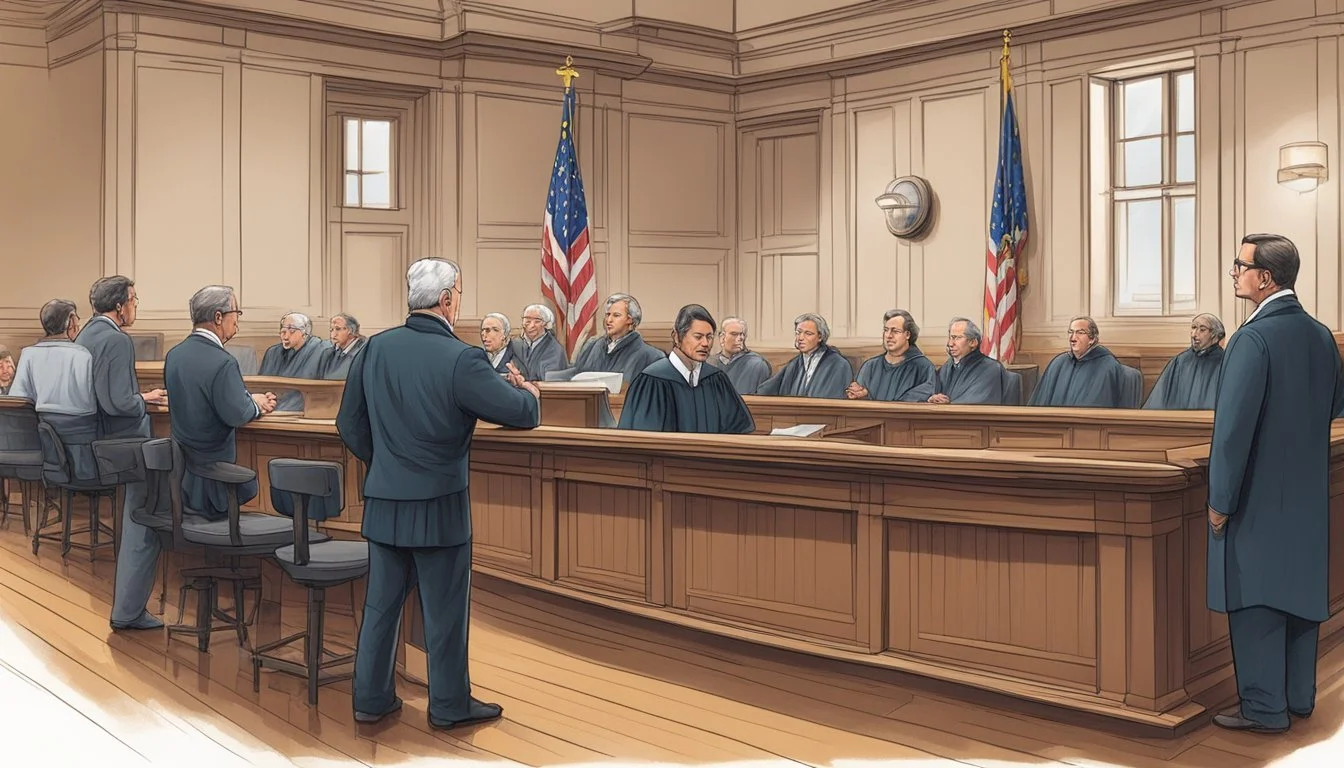Water Rights in Illinois
Understanding State Regulations and Access Challenges
Water rights in Illinois encompass a multifaceted legal framework that dictates the allocation, use, and management of water resources within the state. The complexity stems from a rich tapestry of common law, statutory provisions, and regulatory guidelines that govern both surface water and groundwater use. Ancient doctrines, initially developed when water scarcity was not a prevailing concern, have evolved through the courts and legislative action to address the contemporary needs and environmental considerations of Illinois' diverse water landscape.
In Illinois, water rights and their management are crucial due to the state's reliance on both surface water, such as the Great Lakes, and vast groundwater reserves. Lawmakers and courts aim to balance private property rights with public interest, ensuring that water use aligns with the principles of sustainability and reasonable use. This balance is particularly crucial in areas where water is not abundantly available and competing interests for agricultural, industrial, and residential use pose potential conflicts.
Navigating water rights in Illinois requires an understanding of the different legal doctrines that have been applied to resolve such disputes. For instance, the rule of reasonable use has been instrumental in determining how much water can be used by a landowner without infringing on the rights of others. Whether dealing with water rights as they pertain to landownership or public use for recreation, Illinois law seeks to ensure equitable and responsible stewardship of its water resources.
Historical Overview of Water Rights in Illinois
The evolution of water rights in Illinois reflects a complex interplay between statutory law and judicial decisions, shaped significantly by principles of common law.
Development of Water Laws
In Illinois, water law has developed through a combination of statutes, administrative regulations, and case law. Initially, the state adopted the Riparian Doctrine, which allows landowners whose property abuts a body of water the use of that water. However, as the need for more comprehensive water management grew, Illinois law evolved to address both surface and groundwater usage. Illinois statutes now govern the diversion and use of freshwater, integrating public welfare considerations and permitting systems for water appropriation.
Influence of Common Law
Common law, a body of unwritten laws based on legal precedices established by the courts, has significantly influenced Illinois water rights. Illinois common law has been molded by judicial decisions that often draw upon English legal tradition, yet it also adapts to the specifics of water use and needs within the state. While common law provides the framework for navigating disputes and water allocation, it works in tandem with Illinois statutory and regulatory law to address current issues related to water rights and usage.
Legal Framework Governing Water Rights
The legal framework governing water rights in Illinois is shaped by a mix of federal influence and state-specific regulations, with the General Assembly playing a pivotal role in the legislative aspect.
State versus Federal Regulation
Federal law establishes broad oversight of water resources to ensure navigability and environmental protection, whereas Illinois law stipulates more detailed governance at the state level. State policy tends to cover the allocation of water rights, influenced by common law principles such as the reasonable use doctrine—as seen in this University of Mississippi overview. State regulations may also delineate water usage for different sectors, including agricultural, industrial, and residential utilities.
Illinois Water Law and Statutes
Illinois water law encompasses both statutory and common law. It differentiates between surface water and groundwater regulations, with most surface water diversions being regulated by common law, as noted in DePaul University's research. The Doctrine of Appropriation, originating from Roman Civil Law, plays a role in determining how water rights are distributed among those who use it for beneficial and reasonable purposes. The University of Illinois Urbana-Champaign provides insights into how non-use can lead to the loss of water rights in their introductory guide.
Role of the General Assembly
The General Assembly is responsible for crafting and enacting state policies and laws regarding water rights. They can enact changes in statutes which will affect how water rights are allocated and disputes are resolved. This legislative body provides the legal framework necessary to handle the complex issues of water management, including the interface of federal and state law. The nuances of these regulations can significantly impact the rights of riparian owners, an issue explored by the Illinois courts as demonstrated by Hawkins Parnell & Young's legal case summary. The General Assembly often addresses the intersections of state water law with broader policy concerns, such as energy and environmental conservation.
Riparian Rights Doctrine
In Illinois, the Riparian Rights Doctrine is a significant legal framework that governs water usage for those with properties adjacent to waterways.
Definition of Riparian Rights
Riparian rights refer to the entitlements of landowners whose property is on the bank of a river or stream. These rights are an integral part of property ownership and relate directly to the water adjacent to their land. Illinois law recognizes these rights, adhering to the principle that these rights arise from property ownership and are conjoined with the land itself.
Riparian Owners' Privileges and Obligations
Privileges: Riparian owners enjoy a range of use rights involving the water next to their land. They can make use of the water in a manner that is reasonable and maintains the balance of the ecosystem and the rights of other landowners. For instance, riparian rights include the consumption of water for personal use, agriculture, and in some cases for commercial purposes.
Obligations: While possessing rights to water use, riparian owners must also ensure their actions do not interfere substantially with the rights of others or damage the water source. This includes avoiding pollution and not impeding the natural flow of the water. In accordance with the reasonable use doctrine, a riparian owner's usage of water should not diminish the quality or quantity of water to a degree that it prevents others from enjoying their riparian rights.
Navigability and Its Impact on Rights
In Illinois, the navigability of a waterway is integral in determining the scope of public and private rights to the water. The distinction between navigable and non-navigable waters influences access, use, and ownership.
Determining Navigability Status
Determining whether a river or lake is navigable in Illinois hinges on its historical use for commerce, trade, or transportation. This includes examining whether the waterway has been or could be used to transport goods or passengers in its natural and ordinary condition. Courts will assess navigability based on precedent and the specific characteristics of the waterway in question.
Rights Associated with Navigable Waters
For navigable waters, the public holds rights that extend beyond just commerce. These rights typically include fishing, boating, and other recreational activities. Under the Public Recreational Rights in Illinois Rivers and Streams, it's clear that owning land adjacent to navigable rivers does not grant exclusive control over the waterway's usage. Additionally, Illinois General Assembly legislation (HB1568) provides frameworks for how the public can utilize these navigable waters while outlining certain protections and limitations.
Non-Navigable Waterways
On the other hand, non-navigable waters, such as some private lakes or rivers, are subject to ownership and control by the landowner. These non-navigable bodies of water are not subject to the same public rights as navigable waters. The right to use non-navigable rivers and non-navigable lakes for activities like fishing or boating typically requires the landowner's consent, as highlighted in the Survey of Illinois Public Waters Law.
Trespass and Public Access
The interplay between individual property rights and the public's right to access waterways in Illinois is a complex legal area, involving statutes and case law that define trespassing on water bodies and outline the scope of public access.
Legal Definition of Trespass on Waterways
Trespass in the context of waterways often involves unauthorized access or use of a water body. Under Illinois law, trespassing on waterways can occur when individuals enter or remain on a water body which is part of private property without permission from the landowner. This legal boundary hinges on whether the waterway is classified as navigable or non-navigable, where the latter typically confers more exclusivity to the property owner.
Public Access to Waterways
The right of the public to access waterways in Illinois is grounded in the Public Trust Doctrine. This principle holds that the state must preserve certain resources, like navigable waterways, for public use. The definition of navigable waters and the extent of public access, such as the ability to boat, fish, or walk along the banks, can vary based on federal, state laws, and local ordinances.
Disputes and Landowner Rights
Disputes often arise when landowners assert their rights to exclude others from their property, including adjacent waterways. Illinois courts may be called to balance the landowners' rights to enjoy their property without interference against the public's right to access and use waterways. The outcomes of such disputes can affect recreational activities like kayaking past private property and have led to calls for clearer guidelines on public and private rights regarding Illinois waterways.
Recreational Use of Waterways
Recreational activities on waterways in Illinois, such as kayaking, are shaped by legal frameworks and have implications for landowners adjacent to these water bodies.
Legal Rights to Recreational Use
In Illinois, the public has specific rights for recreational use of rivers and streams. Legislation and court rulings establish that navigable waters are held in trust for the people, which means that activities like kayaking are generally permissible. For waterways historically used for commerce or recreation, the public retains the right to engage in activities including boating and fishing. Efforts have been made to clarify and protect these rights, resulting in proposed amendments to existing laws that reinforce the public's ability to use waterways for recreation without altering underlying law.
Impact on Riparian Owners
Riparian owners, those owning land immediately adjacent to a river or stream, have certain rights and responsibilities that can be affected by public recreational use. While recreational use is permitted, the presence of kayaks and other watercraft must not infringe on the landowners' rights. An Illinois Appeals Court ruling solidifies that the common law, favoring riparian owners, prevails over the civil law in disputes over non-navigable rivers. This reflects a nuanced balance between enabling public access for recreational activities and safeguarding the rights of those owning property alongside Illinois waterways.
Waterway Management and Protection
In Illinois, effective waterway management and protection are paramount, with the Illinois Environmental Protection Agency playing a crucial role in enforcement and preservation efforts to ensure the sustainability and health of the state's waterways.
Role of the Illinois EPA
The Illinois EPA is responsible for the enforcement of environmental laws that protect the quality of the state's water resources. They regulate the discharge of pollutants into waterways, ensuring compliance with the Clean Water Act. The statewide water quality standards established by the agency are crucial in maintaining the ecological balance and usability of water bodies for various purposes.
Waterway Preservation Efforts
To further waterway preservation, numerous efforts are implemented, which involve both legal interventions and community participation. These include initiatives to monitor and improve water quality, safeguard habitats, and restore ecosystems. The Prairie Rivers Network, through advocacy and education, contributes significantly by informing the public about their rights to Illinois waterways and the obligations of the state to uphold these rights. Additionally, legal frameworks, such as rulings by the Illinois Appeals Court that uphold common law regarding waterway rights, play a fundamental role in waterway management and protection.
Notable Legal Cases and Precedents
In the complex legal landscape of Illinois, water rights have been shaped by a series of decisions and rulings from the state's courts. These cases have established critical precedents that continue to guide riparian law in Illinois today.
Illinois Supreme Court Decisions
Holm v. Kodat (2022) - This case reaffirmed that Illinois does not grant riparian owners on non-navigable rivers the right to trespass across another's property without permission. The state's highest court emphasized the distinction between lake and river or stream property boundaries, a principle entrenched in Illinois law for more than a century. For a detailed account, see the Holm v. Kodat decision.
Appellate Court Rulings
Illinois Appeals Court (2021) - A pivotal turn of events saw the Appellate Court favoring common law over civil law in the debate on waterway rights of riparian owners. Specifically, the Third District Appellate Court ruled congruently with common law principles, as argued by the plaintiff, represented by a litigator from Hawkins Parnell & Young. This case's insights can be found in a summary on Hawkins Parnell & Young's news release.
Key Cases Shaping Water Rights
Evans v. Merriweather (1842) - This case set the foundation for Illinois's reasonable use doctrine, establishing the premise that each proprietor must use running water in a way that minimizes the impact on those downstream, balancing it with their own benefits. Further reference can be seen in the overview from University of Mississippi.
Other cases like Tarrant Regional Water Dist. v. Herrmann and Arkansas Game and Fish Com'n v. United States, while not Illinois-specific, have had indirect national implications that resonate with water law discussions in Illinois, as compiled by the National Agricultural Law Center.
Ecological and Environmental Concerns
The interplay between water rights and the environment in Illinois is a pivotal concern for the state's ecology and sustainable management practices. It's essential to discern how the existing laws influence natural habitats and to ensure that water resources are utilized with foresight and care.
Impact of Water Laws on Ecosystems
Water laws in Illinois have a direct effect on the ecosystems of the state’s water bodies. Stringent regulations are necessary to protect over 119,000 miles of streams and the welfare of more than 91,000 freshwater lakes and ponds. The state's jurisdiction over a significant portion of Lake Michigan also underscores the need for laws that safeguard against pollution and ecological disturbance.
The Illinois Environmental Council discusses the abundance of water resources and the need for protective legislation to preserve these vital ecosystems. These ecosystems not only support diverse aquatic life but also benefit the entire flora and fauna that depend on them. Effective water laws work to maintain the natural flow regimes, water quality, and overall health of these habitats.
Sustainable Water Resources Management
The approach to sustainable water resources management in Illinois requires a balance between human use and ecological integrity. Policies must address water conservation and responsible consumption patterns to prevent depleting the ecological reserves of waterways.
Methods like turning off the tap while brushing teeth, recommended by the University of Illinois Law Library guide, exemplify practical conservation measures. When residents are educated about better bathroom practices, it can lead to less water waste and, consequently, a reduced strain on the state's aquatic ecosystems.
Additional environmental issues such as water pollution, as reported by the Environmental Working Group, highlight the necessity for continued focus on controlling pollutants and enforcing the laws designed to protect Illinois’s waterways. With proper governance and public engagement in sustainable practices, Illinois can ensure that its water resources support both the needs of its residents and the ecological systems that are fundamental to the environment's health.
Economic Aspects of Water Rights
Water rights significantly influence Illinois' economy, particularly through their impact on land use and economic development. Understanding the intersection between water resource management and the economic framework is key for sustainable economic growth.
Water as an Economic Resource
In Illinois, water is acknowledged as a critical economic resource. It supports various sectors including agriculture, industry, and municipalities. For instance, the allocation of water to DuPage County and the modifications of legal decrees reflect the state's effort to balance economic growth with sustainable water use. The principle of beneficial use mandates that water resources are utilized effectively for the greatest possible economic advantage, often with a focus on how such use impacts surrounding communities and economies.
Land Use and Economic Development
The correlation between water rights and land use in Illinois is evident in the state's support for infrastructure that promotes efficient water utilization. The significant investment in water infrastructure, like the funding for clean water infrastructure upgrades, highlights the state's approach to intertwine water management with land development strategies. Properly managed water rights facilitate the expansion of farmland, the establishment of new industries, and the overall development of municipalities, directly impacting the state's capacity for economic development.
Local Case Studies
The complexities of water rights in Illinois are often best understood through specific local case studies. These situations highlight the interaction between historical common law and present-day regulations.
Mazon River Area
In the Mazon River area, the common law has been a dominant force in shaping water rights. Litigators within Grundy County have successfully argued for the application of common law to waterway rights of riparian owners, particularly around non-navigable rivers like the Mazon River. This sets a precedent that closely links water rights with the land that abuts the waterway, granting the landowners adjacent to the river certain usage rights.
Grundy County Water Rights
In Grundy County, water rights disputes also accentuate the rule of reasonable use when it comes to groundwater consumption. This principle is significant in areas where groundwater is the primary source of fresh water. Illinois courts outline the importance of this rule to ensure that water use by one does not detrimentally impact others, thereby affecting the interests of local communities and farmers who rely heavily on these water sources for their livelihood. This was elucidated in decisions like the case of Edwards v. Haeger, which helped to further define reasonable use in Illinois, as reviewed in Illinois Groundwater Law literature.
Educational and Research Initiatives
In Illinois, prominent educational institutions spearhead innovative studies on water sciences, while comprehensive data and research on water law set a framework for sustainable water management.
University of Illinois Studies
The University of Illinois stands at the forefront of water-related research through multiple channels including the Illinois Water Resources Center and iSEE Research projects. The university hosts researchers like Adam Holm, whose work emphasizes enhancing water sciences research and higher education across the state. This institution's efforts also extend to areas such as sanitation technology and stormwater management, demonstrating its active engagement in addressing diverse water issues.
Water Law Research and Data
Research on water law is vital to understanding and navigating the complex legal landscape surrounding water rights and usage. The University of Mississippi provides a clear blueprint of Illinois' water law, which has evolved significantly since the reversal of the Chicago River and the inception of the Chicago Ship and Sanitary Canal in 1900. Data gathered by legal researchers, including expert Peter Kodat, inform policy-making and ensure that water law keeps pace with contemporary environmental challenges and infrastructure needs.
Frequently Asked Questions
Water rights in Illinois are anchored in legal principles that govern the use, allocation, and management of water resources. Understanding these rights requires knowledge of riparian and littoral rights, regulatory statutes such as the Illinois Rivers, Lakes and Streams Act, and the processes for engaging with the Department of Natural Resources.
What defines riparian rights in the context of Illinois law?
In Illinois, riparian rights pertain to landowners whose property is contiguous to a natural body of water. They are entitled to reasonable use of the water as long as it does not harm downstream owners.
How does the Illinois Rivers, Lakes and Streams Act impact water rights?
The Illinois Rivers, Lakes and Streams Act requires individuals to obtain permits before engaging in activities that alter the flow, cross-section, or bed of any state waterway, which in turn impacts water rights by ensuring that these alterations don’t adversely affect public interests or rights.
What is the legal status of creeks on private property in Illinois?
Creeks on private property in Illinois fall under the state's riparian rights framework. Landowners typically have the right to use the water, but cannot impede its natural flow or use it in a way that would infringe upon the rights of others.
How are littoral rights applied in Illinois water law?
Littoral rights in Illinois apply to landowners adjacent to large, navigable lakes and provide for access to and use of the shoreline, and participation in decisions about the body of water, balanced against public and environmental interests.
What is the process for obtaining DNR water-related permits in Illinois?
To obtain DNR water-related permits in Illinois, applicants must consult with the Department of Natural Resources, provide details of the proposed activities, and undergo a review process that considers environmental and public impact.
What are the principles of drainage law in Illinois?
Drainage law in Illinois primarily operates under the idea that landowners have the right to protect their property from flooding and excess water. However, any drainage systems implemented must not harm other properties or run afoul of existing water rights and regulations.










